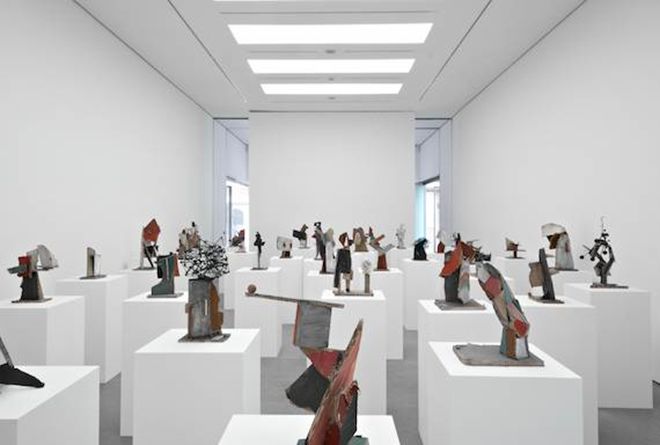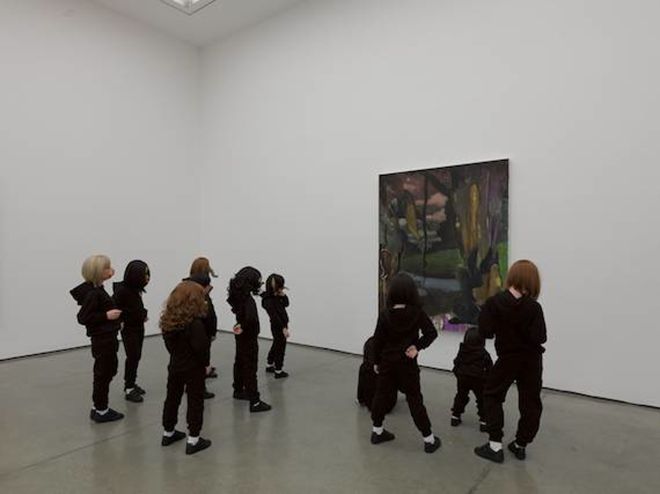Tim Marlow of White Cube speaks about the gallery’s expansion
White Cube was launched in 1993 by Jay Jopling with the eponymous “white cube” room in London’s West End, designed by renowned minimalist Claudio Silvestrin. Its groundbreaking curatorial device used the space for a series of unique projects by individual artists. In 2000 White Cube moved to bigger premises in Hoxton Square in London’s East End, partly to be closer to the emerging art scene there but also to the gallery’s artists, who had redefined British contemporary art and continue to do so. In 2006 the gallery returned to the West End with a building in Mason’s Yard.
White Cube represents some 50 artists, including not only such internationally renowned, feted, and controversial figures as Damien Hirst, Tracey Emin, and the Chapman Brothers, but also German Neo-Expressionists such as Georg Beselitz and Anselm Kiefer. They also represent Christian Marclay, whose recent real-time montage “The Clock” has redefined video art. The projected opening for the Hong Kong gallery in the heart of its Central District is May 2012.

Chris Moore: I want to start off by asking you, why Hong Kong? Why not somewhere else, such as New York or Tokyo or, for that matter, even Dubai?
Tim Marlow: We’ve been looking at a number of places, at options of working in a number of ways, and that still goes on. But it’s certainly true to say that we would not have opened an office in Hong Kong if we had not been able to find gallery space. We’re opening now in Hong Kong — and it happens to be the first [White Cube outside London] — because we found the right gallery space. With over six meters of height and 2,800 square feet on the ground floor, and then another 4,000 square feet on the next floor, that’s substantial, particularly by Hong Kong standards. So that determined it. But obviously we identified Hong Kong as a hub for Asia. It’s pivotal, we think, and it’s interesting in and of itself. It’s postcolonial; since we are a British-based but now internationally reputed art gallery, Hong Kong is interesting. It’s also interesting because of the future in Hong Kong. I think it looks like there’s some momentum there, and I don’t mean just the Hong Kong Art Fair but also what’s happening in Kowloon is significant. There’re one or two interesting institutions, small scale, that are part of the gathering momentum: Asia Art Archive, Parasite and so on. Kowloon has really thrown down a marker. And then obviously mainland China is something our artists are particularly interested in the possibility of working in. For us to try and find ways of working effectively there — I mean more culturally than commercially, although the mainland market is of course interesting too — Hong Kong is very good for that. The whole point of being in Hong Kong is to try and embed ourselves more in Asia and to give us a base from which we can discover in much more depth what is happening in that region as well as in Hong Kong.

(© the artists. Photo: Ben Westoby; courtesy of White Cube)
CM: So you have long-term strategic considerations in opening up in HongKong?
TM: Yes.
CM: In saying so, you’re seeing Hong Kong as something more than simply a crossroads art center — somewhere potentially comparable with Basel — but more as somewhere that is going to be an artistic or curatorial production center in the way that London, Berlin, or New York are. Is that a fair assessment?
TM: I don’t think I’d ever go on record as saying that Hong Kong is going to be the next Berlin or London or New York. I absolutely don’t say that. But I think it’s a place with interesting cultural momentum. It’s interesting and slightly odd that in a postcolonial territory there aren’t any museums, but Kowloon is clearly now a place where that is going to develop. So the exhibition and production of art will start to take place in Hong Kong. But, no, I’m definitely not overstating the case on that.
CM: So what do you see as the particular difficulties or challenges of the Hong Kong market? What still needs to change or develop in Hong Kong or, for that matter, the broader Chinese art market?
TM: You’re talking about the art market now?
CM: Well, I’m conflating matters there, because these are all interrelated.
TM: I want to say from the beginning — and it is the truth — we are very emphatically an artist-led gallery. We can develop markets globally. The art market is global enough that if you have the best work, there are markets to work with. The first and foremost reason why we’re entering that region [China] is because our artists are interested in exhibiting and developing their reputations and careers there. There are plenty of other places in the world where the signs show there might be a booming market in certain respects, but if artists are not interested in exhibiting there and working in those cultures, then we’re not interested.
CM: At the moment, White Cube doesn’t represent Chinese artists.

(Courtesy of the Duerckheim Collection)
TM: It represents Zhang Huan. We did a major show, “Zhu Gangqiang” (Cast – Iron – Pig) with Zhang Huan two years ago. The show involved a satellite link-up to his studio with a pig [Zhu Gangqiang] that survived the Sichuan earthquake. We had two distantly related pigs living in our gallery for six weeks, and the smell has only just gone, so Zhang Huan is always with us!
Anyway, we don’t have a significant stable of Chinese artists. Are we looking to develop our stable of Chinese or regional artists? Possibly. But without wanting to sound disingenuous, we’re not only here with the explicit intention of “Yep! We’re going to hoover up a whole number of Chinese artists.” We think that there is a lot of interesting art that is being produced; there are all sorts of interesting emerging themes and it’s only by having a base there that one has a significant chance of really understanding and starting to work out what’s significant and what’s interesting. It’s all very well sitting in London or New York or wherever else and looking at overheated auction markets, but that’s no real way of determining what’s going on among Chinese artists.
CM: So do you see the fervid auction market in China as a help or a hindrance to the development of a mature art market, or is it just simply irrelevant?
TM: I’m afraid it’s not irrelevant; it’s just a fact that you have to work with. Obviously, as a primary market gallery, we would argue for the price you see at a primary market gallery. But in terms of managing artists’ careers, managing their reputations, managing their market, I don’t know of a significant artist in the world that doesn’t work predominantly with the primary market. I think that a number of artists have got bitten by working extensively with a secondary market. In no way am I hinting at Damien Hirst there — absolutely not. I don’t particularly want to talk about Damien because it’s not about him. But his work with auction houses — it turns out to have been exemplary. He’s controlled his own market in that way. I’m talking more broadly here. Artists in certain parts of the world have worked extensively or almost exclusively with auction houses, and the evidence shows that things go wrong.
CM: It’s a phenomenon that’s not unique to Asia, that’s for sure. Have you appointed a director for the gallery, or are you going to be personally looking after this?
TM: Graham Steele is going to be director of White Cube Asia. Graham will be based in Hong Kong and will be traveling extensively around the region — he’ll be traveling extensively around the world! But he’s there and already he’s trying to compile his team, which will be people from the region. He’s targeting very good people.
CM: He speaks Chinese?
TM: He doesn’t, but his senior staff will all speak Mandarin or Cantonese or both.
CM: Finally, it’s been reported that White Cube sold a major work by Chapman Brothers, “Das Kapital ist Kaputt? Ja? Nein! Dummkopf!” at the Hong Kong Art Fair for £525,000 ($821,000 / RMB 5,230,850) to an “Asian collector.” Are you able to comment in general terms on your mainland and non-mainland collectors as a group?
TM: It’s difficult to do that, at the moment, not simply because people want a certain degree of discretion. But I can talk in general terms. The fact is I’m not sure that we’ve seen a clear pattern emerging. I’ll tell you what excites me, though. There are some significant collectors in the region, and there are new collectors emerging in the region. Mainland Chinese [collectors] are now clearly starting to become interested in certain aspects of Western art and are starting to buy. But it’s the emergence of private museums: there are at least two significant private museums in mainland China, and obviously we’re interested in that and in close discussion with them. Projects are being hatched or developed, and that’s very interesting.